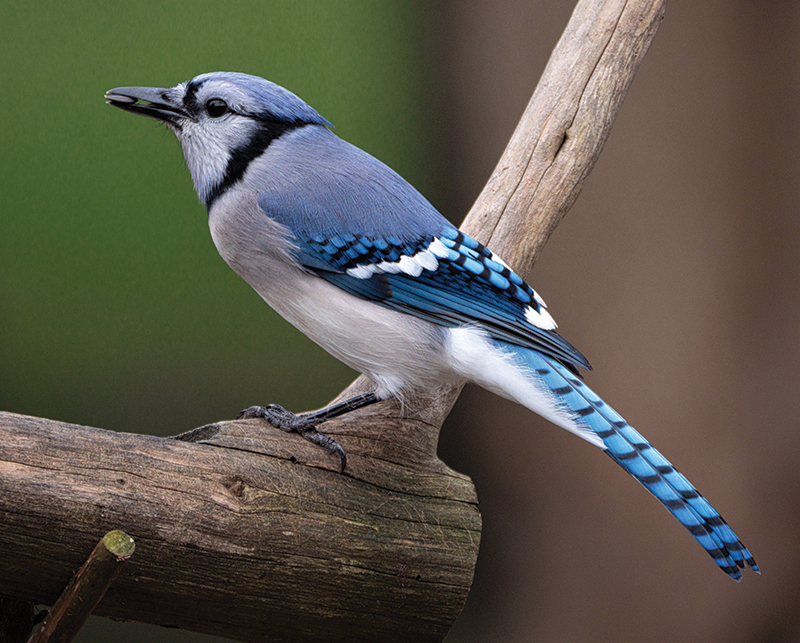
Blue Jays

Image credit: Niall Doherty.
They might be called all sorts of unkind (and unjust) names, like “bully,” “nuisance,” or “thief,” but I still like blue jays.
First, these familiar birds are drop-dead gorgeous. With their striking white, blue, and black plumage, blue jays are standouts. No other bird looks quite like them.
Interestingly, David Allen Sibley notes in his book What’s It Like to Be a Bird that when theories of protective coloration were first being debated around 1900, birds like blue jays were puzzling.
“It was difficult to imagine how such flashy colors could be helpful for concealment,” Sibley writes. “Now we know that color patterns evolve for many reasons, not just camouflage.”
Sibley and others theorize, for example, that the jay’s flashy colors might save their lives. “A panicked blue jay, taking off in a burst of movement and flashes of white could cause a predator (like an attacking cooper’s hawk) to flinch, and that might allow the jay to escape,” he explains.
Second, blue jays are some of the most intelligent birds on the planet. They are part of the Corvidae family. These include ravens, crows, magpies, jackdaws, rooks, treepies, choughs, and nutcrackers.
Tool use has never been reported for wild blue jays, but captive blue jays used strips of newspaper to rake in food pellets from outside their cages, according to AllAboutBirds.org.
Third, blue jays are intrepid sentinels for many creatures of the forest, warning them when predators are nearby. In fact, these big, brash, colorful, birds are one of the few birds who will “mob” or surround lurking hawks in treetops, harassing them with their strident calls, until the predator leaves the area. The tiny chickadee is another bird who has the temerity to mob a hawk.
How did blue jays get a bad rap? Difficult to say, but here’s one possible answer.
In 1825, John James Audubon may have been one of the first to suggest jays are “thieves,” when he painted a stunning, yet graphic composition of blue jays devouring eggs from presumably another bird’s nest.
“Reader, look at this plate in which are represented three individuals of this beautiful species, rogues though they may be, and thieves, as I would call them, were it fit for me to pass judgement on their actions,” Audubon wrote after completing the masterpiece.
Thankfully, 172 years later, another celebrated author and bird painter came to the jay’s defense.
In 1997, Roger Tory Peterson championed blue jays in his book Favorite Audubon Birds of America arguing, “For a jay to rob a nest is a natural act.”
“Jays have helped themselves to eggs for centuries, and still small birds thrive; their reproductive rate is geared high enough to absorb such losses,” Peterson said.
Finally, how do you attract blue jays to your feeders?
Use black oil sunflower seeds in your feeders. This is an excellent way to attract blue jays, as well as cardinals, nuthatches, chickadees, and goldfinches, to name a few. Enjoy!
Bill Hobbs is a contributing nature writer for Estuary magazine and The New London (CT) Times. He lives in Stonington, CT, and can be reached for comments at whobbs246@gmail.com.
Other cool facts from AllAboutBirds.org
>The black bridle across the face, nape, and throat on blue jays varies greatly and may help these birds recognize one another.
>The oldest known wild, banded blue jay was at least 26 years and 11 months old, when it was found dead, caught in fishing gear in Newfoundland/Labrador.

